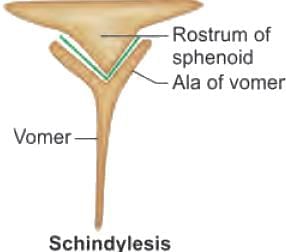NEET PG Exam > NEET PG Tests > Test: General Anatomy - NEET PG MCQ
Test: General Anatomy - NEET PG MCQ
Test Description
20 Questions MCQ Test - Test: General Anatomy
Test: General Anatomy for NEET PG 2025 is part of NEET PG preparation. The Test: General Anatomy questions and answers have been prepared
according to the NEET PG exam syllabus.The Test: General Anatomy MCQs are made for NEET PG 2025 Exam.
Find important definitions, questions, notes, meanings, examples, exercises, MCQs and online tests for Test: General Anatomy below.
Solutions of Test: General Anatomy questions in English are available as part of our course for NEET PG & Test: General Anatomy solutions in
Hindi for NEET PG course.
Download more important topics, notes, lectures and mock test series for NEET PG Exam by signing up for free. Attempt Test: General Anatomy | 20 questions in 20 minutes | Mock test for NEET PG preparation | Free important questions MCQ to study for NEET PG Exam | Download free PDF with solutions
*Multiple options can be correct
Detailed Solution for Test: General Anatomy - Question 1
*Multiple options can be correct
Detailed Solution for Test: General Anatomy - Question 2
Detailed Solution for Test: General Anatomy - Question 3
Test: General Anatomy - Question 4
All of the following statements are true for metaphysis of bone EXCEPT:
Detailed Solution for Test: General Anatomy - Question 4
Detailed Solution for Test: General Anatomy - Question 5
*Multiple options can be correct
Detailed Solution for Test: General Anatomy - Question 6
Detailed Solution for Test: General Anatomy - Question 7
*Multiple options can be correct
Detailed Solution for Test: General Anatomy - Question 8
Detailed Solution for Test: General Anatomy - Question 9
*Multiple options can be correct
Detailed Solution for Test: General Anatomy - Question 10
Detailed Solution for Test: General Anatomy - Question 11
*Multiple options can be correct
Detailed Solution for Test: General Anatomy - Question 12
Detailed Solution for Test: General Anatomy - Question 13
*Multiple options can be correct
Detailed Solution for Test: General Anatomy - Question 14
Test: General Anatomy - Question 15
Which of the following is a synovial joint of the condylar variety?
Detailed Solution for Test: General Anatomy - Question 15
Detailed Solution for Test: General Anatomy - Question 16
*Multiple options can be correct
Detailed Solution for Test: General Anatomy - Question 17
Detailed Solution for Test: General Anatomy - Question 18
Detailed Solution for Test: General Anatomy - Question 19
Detailed Solution for Test: General Anatomy - Question 20
Information about Test: General Anatomy Page
In this test you can find the Exam questions for Test: General Anatomy solved & explained in the simplest way possible.
Besides giving Questions and answers for Test: General Anatomy, EduRev gives you an ample number of Online tests for practice
Download as PDF















